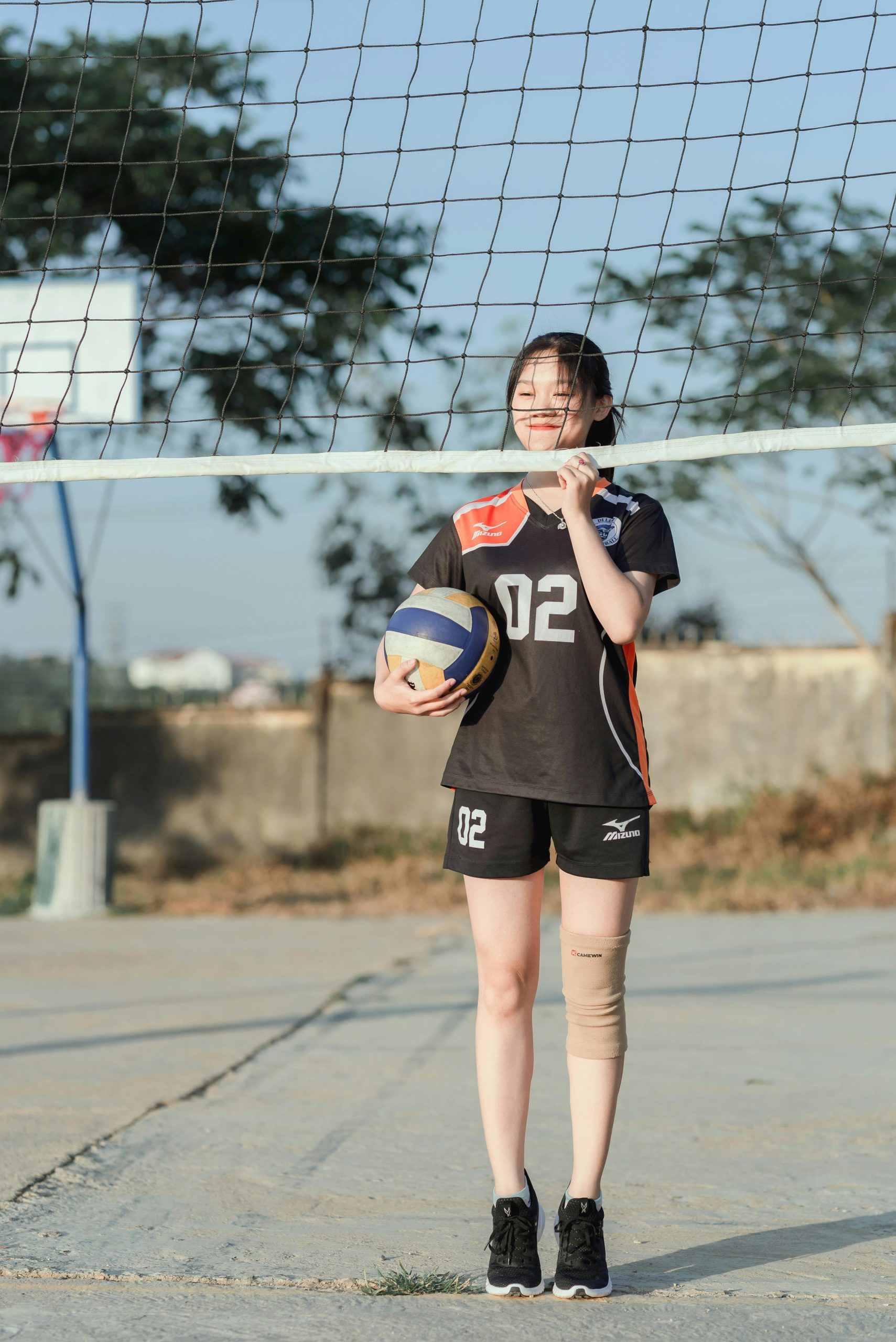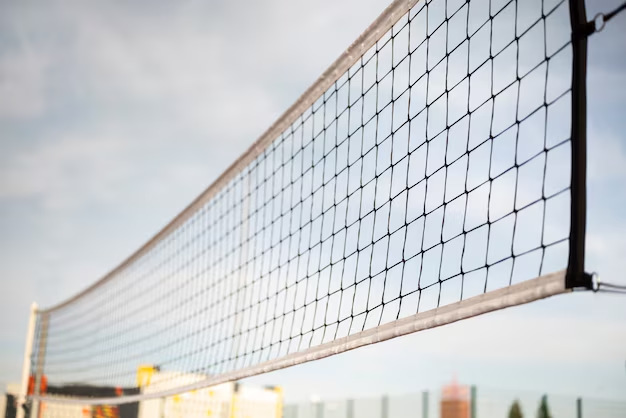Middle school volleyball is a version of volleyball sport specifically designed for students between 11 to 14, corresponding to grades 6 through 8 in most school systems.
It is a kind of introductory level of organized volleyball, where young athletes learn fundamental skills, teamwork, and sportsmanship in a structured and supportive environment.
This volleyball programs is specifically designed for all middle school grades (usually 6th, 7th, and 8th grades). It include teams specifically for younger players (6th graders) and more advanced teams for older students (7th and 8th graders).
In this blog post, we’re going to look at some of the most important middle school volleyball rules in 2024. These rules are important and may serve as guidelines for parents, coaches and players.
It is crucial for middle school players, coaches, and parents to familiarize themselves with the latest rules and regulations of the middle school volleyball games.
These guidelines not only ensure fair play but also promote the development of essential skills and sportsmanship.
Basic Middle School Volleyball Rules
Let’s start with the basic volleyball rules. Below are some rules and guidelines for coaches, parents and young players to familiarise themselves with.
1. Governing Body:
The primary governing body for middle school volleyball is the National Federation of State High School Associations (NFHS), which provides general guidelines, although schools and districts might adopt slight variations. Below are few essential rules:
2. Basic Match Format
- Team Composition: Each team should consists of 6 players on the court.
- Match Length: Matches are typically played in a best-of-three or best-of-five sets format.
- Set Points: A set is won by the first team to reach 25 points (15 points in the deciding set), with at least a 2-point lead.
- Court Dimensions: The standard court size is 30 feet by 60 feet.
3. Equipment
- Ball: use a lightweight volleyball which is mostly designed for younger players.
- Net Height: For middle school, the net height is set at 7 feet, 4 1/8 inches.
4. Rotation and Substitutions
- Rotation: Teams rotate clockwise after gaining the serve from the opponent.
- Substitutions: Players may be substituted multiple times during a set, though some leagues cap this number. Coaches should check specific local rules.

Team and Court Set up Rules
- Middle school volleyball Courts: The volleyball court is a rectangle measuring 18 meters long and 9 meters wide. However, the court is also surrounded by a free zone that measures at least three meters wide on all sides.
The court is divided into two equal halves and also has a front zone of three meters on both sides of the net. - Volleyball nets: The height of the net is 2.43 meters for males and 2.24 meters for females. There are also two 18-meter-high antennas attached to both sides of the net. Every ball needs to be passed through these antennas.
- Team size: There are two teams of six players playing with each other to win the points. Every team has two hitters, two blockers, one setter, and one libero divided in the front row and back row.
To learn more, read our complete blog posts on volleyball positions.
Middle School Volleyball Game Rules
- Set: The game is played in sets, with each set consisting of 25 points.
To win a set, a team must score at least 25 points and have a two-point lead over the other team. The score is tied at 24, and prayer continues until one team has a two-point lead.
A match is usually played as the best of five sets. If both teams win by two sets, then the fifth set will consist of 15 points instead of 25. - Point: To win a point, a team has to hit the ball on the opponent’s side of the court. Another way is when the opposing team is unable to return the ball or commits a foul.
- Passing: Passing, also known as bumping, is the most basic skill in volleyball. It involves using your forearms to pass the ball to a teammate or up to the net. The goal is to absorb the energy and reduce the speed. The setter receives the pass and then sets up the ball for the hitters to attack.
- Setting: Setting is a technique used to place the ball in the air for a hitter. It requires precision, placement, and timing. There are two or three players who can hit the ball. It’s up to the setter which one he chooses.
- Hitting: Hitting, also known as spiking, is a powerful technique used to score points. It involves jumping and hitting the ball with an open hand to send it over the net into the opponent’s court. The goal is to hit the ball so hard that it touches the ground on the opponent’s side, and the team gets a point. Now, the serving team can also block the ball as the hitter hits it.
- Blocking: Blocking is a technique used to stop the opponent’s attack and deflect the ball back into their court. If the blocker is able to hit the ball on the receiving side, then the team will get a point. If the ball touches the player while blocking the hitter, then this will not be counted as the touch, and the team still has three touches to return the ball. Keep in mind that a single player can’t touch the ball twice in a row. If the serving team wins the point, the server player remains in his current position. But if the receiving team wins the serve, the players will rotate clockwise.
- Starting: The ball starts with the serve, and it is executed from behind the end line of the serve team’s court. The server must toss the ball into the air and hit it over the net between the antennas. To land a successful serve, the server needs to hit the ball in the opponent’s court.
See Also:
- Beach Volleyball Rules: Key Differences From Indoor Game
- Grass Volleyball Rules: A Comprehensive Guide for Players
- Volleyball Defense Drills: Mastering Court Coverage Techniques
- Volleyball Conditioning Drills: Boost Endurance and Agility
- Volleyball Positions Chart: Roles and Responsibilities
- Beach Volleyball vs Indoor Volleyball: Similarities and Differences
- Volleyball Players Positions and Roles Explained
- Volleyball Nutrition – Best Foods and Eating Habits for Players
Middle School Volleyball Court
Court Dimensions
- Length: 59 feet (18 meters)
- Width: 29.5 feet (9 meters)
- Attack Line: 9.8 feet (3 meters) from the center line
The court’s dimensions are carefully designed to challenge players’ agility, coordination, and spatial awareness, fostering their overall athletic development.
Rallies and Scoring
Rallies are the lifeblood of volleyball, where teams battle for every point. Each rally begins with a serve, and the teams alternate hitting the ball back and forth until one team grounds the ball on the opponent’s side or commits a fault.
Scoring System
- Rally scoring is used, meaning a point is awarded on every rally
- The first team to score 25 points (with a two-point advantage) wins the set
- Best-of-three or best-of-five set formats are commonly used
This scoring system keeps the game fast-paced and exciting, encouraging players to maintain focus and intensity throughout each rally.
Rotations and Substitutions
Rotations and substitutions are essential elements of middle school volleyball, allowing for strategic player management and ensuring fair play.
Rotation Rules
- Teams rotate in a clockwise direction after each rally
- Players must maintain their designated positions on the court
- Substitutions are allowed, but players must follow the correct rotation order
Substitution Rules
- Unlimited substitutions are allowed, but players must enter and exit through the substitution zone
- Substitutions can only occur between rallies
- Libero substitutions follow specific rules to maintain the defensive specialist’s role
By adhering to these rules, coaches can effectively manage their team’s lineup, ensuring optimal performance and player development throughout the match.
Middle School Volleyball Faults and Violations
Like any sport, volleyball has its fair share of faults and violations that can impact the flow of the game. Understanding these rules is crucial for players, coaches, and officials to maintain a fair and enjoyable playing environment.
Common Faults and Violations
- Lift: Illegally catching or holding the ball during a hit
- Double Contact: Hitting the ball twice in succession
- Net Violation: Touching the net during play
- Center Line Violation: Stepping on or over the center line
- Back-Row Attack: A back-row player attacking the ball from in front of the attack line
Awareness of these rules helps players develop proper techniques and strategies, while also promoting sportsmanship and respect for the game.
Key Rule Updates for 2024
Every year, small adjustments are made to improve the game and ensure fair play. For the 2024 season, here are a few updates and clarifications:
1. Libero Rules
- Libero Flexibility: The libero (a specialized defensive player) can now serve in one rotation per set without requiring prior designation.
- Uniform Requirements: The libero’s uniform must clearly contrast with the rest of the team’s uniforms, making them easily identifiable.
2. Time Limit Adjustments
Schools have increasingly focused on balancing playtime with academics. For leagues enforcing time constraints, matches must conclude within 1 hour and 30 minutes, with the winner being decided by the score at the end of the allotted time if a full match isn’t completed.
3. Service Line Modifications
Middle school players are permitted to serve from a shortened service line (21 feet from the net) to accommodate skill development. However, transitioning to the regular service line is encouraged as players progress.
4. Conduct and Sportsmanship
New emphasis on penalizing unsportsmanlike behavior from players, coaches, or spectators. Referees have the authority to pause games to address disruptions.
5. Scoring and Rotations in Detail
To help you fully understand the flow of the game, below is a table that outlines how scoring and rotations work in middle school volleyball:
| Scenario | Action |
| Winning a rally | The team scores a point and earns the right to serve next. |
| Losing a rally | The opposing team scores a point and serves. |
| Rotation after gaining the serve | The team rotates clockwise, with the new server moving to the back-right position. |
| Deciding set rotation | Teams switch sides of the court after one team scores 8 points (only in a 15-point deciding set). |
5. Rules for Serving
Serving is one of the most critical skills in volleyball, and middle schoolers are encouraged to develop consistency over power. Below are few serving rules for middle school volleyball:
- Initial Serve: The first serve of the match is decided by a coin toss.
Service Errors: A team loses the point if the server:
- Steps on or over the serving line (foot fault).
- Fails to get the ball over the net.
- Hits the ball out of bounds.
Time Limit: The server has 8 seconds to serve the ball after the referee blows the whistle.
Pro Tip for Players:
Practice a consistent serving routine to stay calm and focused during matches. Even an underhand serve can be highly effective if accurate.
6. Net Play Rules
The action around the net is where games often heat up, so understanding these rules is crucial:
- Net Contact: Players cannot touch the net during play, whether attacking or blocking. Violations result in a point for the opposing team.
- Reaching Over the Net: Players may reach over the net only during:
- A follow-through from a spike.
- Blocking an opponent’s attack, provided the ball is coming into their court.
- Back-Row Attacks: Back-row players can only jump and attack the ball if they take off behind the 10-foot line.
7. Common Violations to Avoid
Below are some mistakes middle school players often make and tips to avoid them:
- Double Hits: A single player hitting the ball twice consecutively is not allowed, except during the first touch (e.g., off a block or serve receive).
Tip: Practice clean passes to teammates. - Four Hits: Teams are allowed a maximum of three touches before sending the ball over the net.
Tip: Develop a “bump-set-spike” rhythm. - Out of Rotation: Players must remain in their rotational positions until the ball is served.
Tip: Coaches should focus on teaching rotation patterns during practice.
Tips for Parents and Coaches
As volleyball enthusiasts supporting middle school athletes, there’s plenty you can do to make the experience enjoyable and productive.
For Parents:
- Be Positive: Cheer for effort, not just outcomes. Celebrate small wins like a successful serve or a good hustle.
- Respect Officials: Referees are human, and their decisions are final. Demonstrate good sportsmanship from the stands.
- Understand the Rules: Familiarize yourself with the basics so you can follow the game and offer encouragement.
For Coaches:
- Prioritize Development: Middle school is the perfect time to focus on skill-building and teamwork rather than just winning.
- Incorporate Fun: Use drills that are both challenging and enjoyable to keep players engaged.
- Teach Sportsmanship: Reinforce the importance of respect for opponents, officials, and teammates.
FAQs
How many players are allowed on the court at one time?
Six players from each team are allowed on the court during a rally.
Can a player serve overhand in middle school volleyball?
Yes, players are allowed to serve overhand or underhand in middle school volleyball.
What is the maximum number of substitutions allowed during a set?
There is no limit on the number of substitutions allowed in middle school volleyball. Teams can make unlimited substitutions as long as they follow the correct rotation order and substitution procedures.
What is the purpose of the libero position?
The libero is a defensive specialist who can freely substitute for back-row players. This position allows teams to have a dedicated defensive player on the court without disrupting the rotation order.
What happens if a player touches the net during play?
If a player touches the net during play, it is considered a net violation, and the opposing team is awarded a point or a side-out, depending on the scoring system used.
Final Take (Conclusion)
As the 2024 middle school volleyball season approaches, players, coaches, and parents alike should embrace the rules and regulations that govern this exciting sport.
These guidelines not only ensure fair play but also foster the development of essential skills, teamwork, and sportsmanship.
In conclusion, learning the basics of middle school volleyball rules, like serving, passing, setting, and hitting, is super important for doing well in the game. Knowing the rules and tricks helps teams work together better and play more competitively.
Whether you’re just starting out or already experienced, keep practicing and improving your skills for a fun and rewarding volleyball experience. So, jump in, practice lots, and enjoy the excitement of this fast-paced game!




